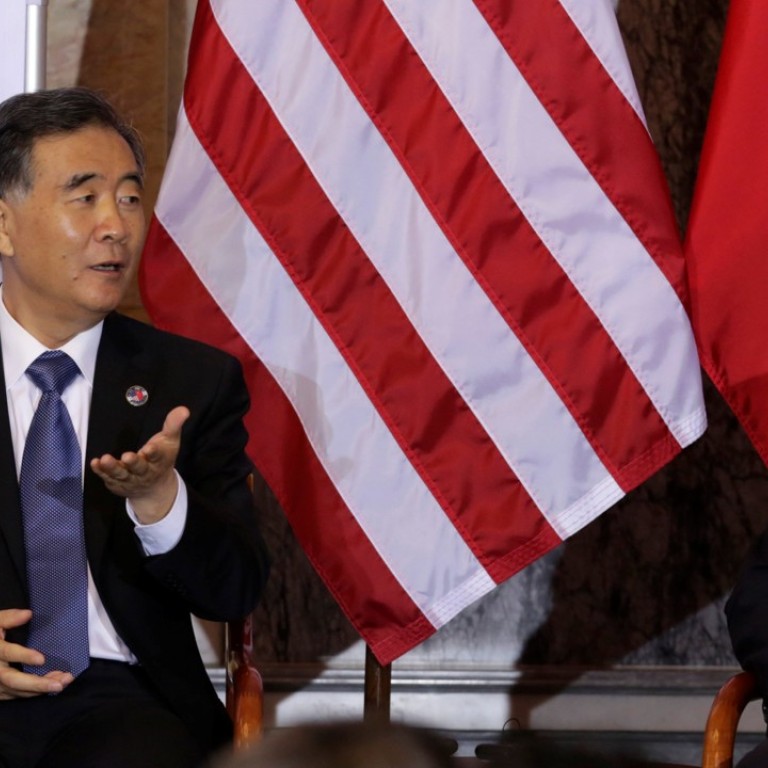
China still has ‘extraordinary’ influence on global trade, but its historic advantages start to diminish as automation rises
The world’s two largest economies, the US and China, are deeply intertwined and any potential trade war between the two could cast a major shadow over global fortunes
China has been the most important driver of revenue and earnings growth for many companies across the globe for years.
But ever-rising wages are reducing its labour-cost advantage, and increased automation in production lines is likely to further diminish the benefits of cross-border labour arbitrage in future, analysts say.
“China’s rise as an economic power over the past two decades continues to have a profound impact on global trade,” said Rob Lovelace, vice chairman and portfolio manager for Capital Group, in a recent research report.
He added the country has had “extraordinary” influence on global trade, accounting for 28 per cent of global car sales, for instance, and 30 per cent of robotics sales last year. The International Federation of Robotics forecast recently that China’s sales could make up 40 per cent of the global sales by 2019.
Other than China’s role as the world’s largest manufacturer of all kinds of goods, its rapid urbanisation has created a boom in the country’s property market, which has led to an “oversized influence” on the global commodities cycle.
Although its economic growth has slowed, China is still a predominant driver for many multinationals’ revenue and earnings growth.

Starbucks, for instance, says China is its fastest growing market in terms of stores, with 2,800 now scattered across the country.
Last month the coffee giant agreed to buy the remaining 50 per cent in its China joint venture for US$1.3 billion, the biggest acquisition in its history.
Another US giant Boeing, too, sold China 164 air planes in 2016, amounting to about US$11 billion, which made the country its largest customer.
“Companies with exposure to China have outpaced broader markets in terms of returns,” Lovelace said.
From the end of 2015 to this March, the MSCI World Index with China exposure has seen a cumulative return of around 30 per cent, while the MSCI World Index only had a cumulative return rate of more than 10 per cent, according to an estimation by Capital Group.
While some worry a potential trade dispute between the US and China may cast a shadow over global trade, Lovelace says the two economic powerhouses have “deep and complex” economic and financial interdependencies, which will “ultimately be accommodating and beneficial for all parties”.
In 2016, the US trade deficit with China was US$347 billion, with Chinese exports at US$116 billion and US Chinese imports at US$463 billion. And a major part of the imports were from US manufacturers that have assembly lines and factories in China.
In the meantime, China relies on some key hi-tech products produced only in the US.
“It (China) is seeking to reduce this dependence by developing its own semiconductor chip industry and electronic payments systems. But these will take time,” Lovelace said.
On the financial front, too, China and the US have “substantial linkages”.
There is no doubt the tax benefits of operating in multiple jurisdictions have historically driven the decisions of some multinationals of where to locate plants and production facilities. The low cost of labour has been an important factor
China holds about US$1.25 trillion in outstanding US government debt, nearly 10 per cent of the total pool. While Chinese companies have been raising capital in the US stock markets through initial public offerings, and offshore US dollar bonds.
In emerging markets, China’s influence has also led to greater trade with developed economies.
According to the latest available figures from the International Monetary Fund, 30 per cent of developed market exports went to emerging markets in 2015, and 46 per cent of trade by emerging markets was between themselves.
As domestic demand rose, regional industry leaders have emerged in Asia, including Chinese online majors Tencent and Lenovo, Indian pharmaceutical company Sun Pharmaceutical Industries, India conglomerate Larsen & Toubro, and Thai Beverage.
“Many of these companies are less vulnerable to demand from the US and Europe,” Lovelace said.
The analysts warn, however, about China’s diminished trade advantages in the near future, as automation rises.
“There is no doubt the tax benefits of operating in multiple jurisdictions have historically driven the decisions of some multinationals of where to locate plants and production facilities,” he said. “The low cost of labour has been an important factor.”
But rising wages in China are reducing its labour-cost advantage, which the country has enjoyed for decades.
More importantly, increased automation in production lines across many industries could further diminish its advantages.
“The economics of automation have hit a sweet spot, where costs of robotics systems are declining and are capable of improving efficiency rapidly, ” Lovelace said.
China is also seeing a “generational shift”, with younger workers less willing to do repetitive tasks.
As automation reduces the importance of labour costs, production could move closer to end-markets, he predicts.
“It is this transformation in the economics of labour that could bring more manufacturing and jobs back to the US.”

